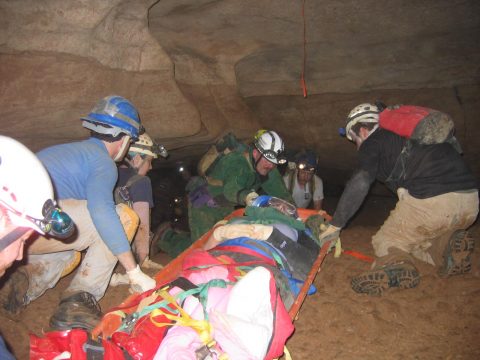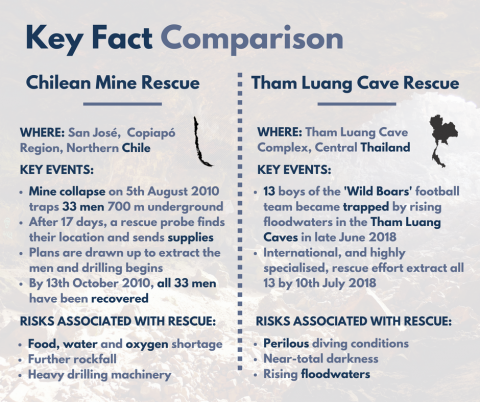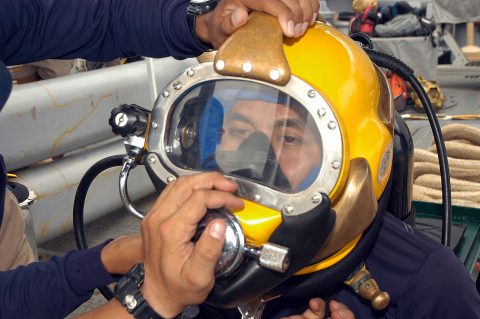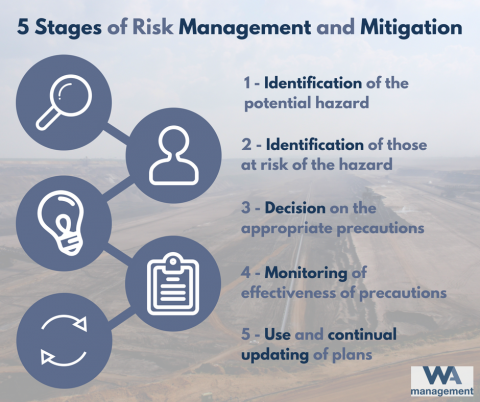WA Management provides professional, adaptable and appropriate solutions for your Health and Safety needs. Each week, our research blog takes a detailed look at particularly topical areas of the sector, or risks that are repeatedly overlooked. In July 2018, the world was captivated by the plight of 13 young Thai footballers, who became trapped in a flooded cave. The event had parallels with another subterranean rescue mission in Chile in 2010. This week, our blog takes a look at how safety and professionalism is maintained in the most trying of circumstances.
Prevailing in the toughest of times
 A mine-collapse trapping workers hundreds of metres underground; a plane losing all engine power at 33,000 feet; an uncontrollable nuclear reactor meltdown. All these extreme and unpredictable events create incredibly challenging situations for those involved and the response teams. Authorities often must balance a specific timeframe with ensuring that safety is maintained. This means that a perilous situation needs to be processed, and a suitable and safe solution needs to be put forward in a matter of days, possibly even hours.
A mine-collapse trapping workers hundreds of metres underground; a plane losing all engine power at 33,000 feet; an uncontrollable nuclear reactor meltdown. All these extreme and unpredictable events create incredibly challenging situations for those involved and the response teams. Authorities often must balance a specific timeframe with ensuring that safety is maintained. This means that a perilous situation needs to be processed, and a suitable and safe solution needs to be put forward in a matter of days, possibly even hours.
This was the daunting and unenviable task that Thai emergency responses teams were met with in early July upon learning that 12 young footballers, and their coach, were trapped in the Thai Luang Cave Complex. The boys, who walked over 2.5 miles into the cave, became trapped when torrential downpours rendered their previous escape routes impassable. Caverns that had, minutes prior, been bone dry suddenly became unnavigable abysses of dark, cold water. The situation looked bleak.
The intense media scrutiny and global cooperation of the response effort had striking parallels with the rescue of 33 Chilean Miners in 2010. The men, who were trapped a vertical 700m underground due to a mine collapse, spent a gruelling 69 days in a mine shelter before being extracted. Rescuers had to drill an unprecedentedly long tunnel through tough Chilean rock, whilst also keeping the trapped men fit, healthy and sane.
Fortunately, in both these tough situations; highly trained professionals, as well as a plethora of experts from the international community, were on hand to formulate a plan.

Side-by-Side analysis of Chilean and Thai rescue efforts
So, what were the plans, and why were they successful?
In Thailand, divers finally made contact with the young football team on July 2nd, and rapidly set out a plan to extract them. Their ideas had to factor in the boys’ inexperience in diving, as well as the rising floodwaters. After debate, rescuers suggested that expert divers should guide the boys out under sedation, whilst industrial pumping crews continued to lower the water levels. On 8th July, 6 days after first contact, the football team began to emerge from the cave and were taken, dejected but safe, to a local hospital for protection.
 Likewise, in Chile, rescue teams brought in specialists from all over the world and combined their industry knowledge with local expertise. A plan to build several potential escape routes was put forward, whilst engineers constructed the Fénix capsule to safely bring the men to the surface. Authorities also prudently employed psychologists who worked with the men underground to keep team-cohesion and morale high. The men felt as if they were architects of their own destiny, and their emergence on the surface after over two months captivated over a billion people who watched it live.
Likewise, in Chile, rescue teams brought in specialists from all over the world and combined their industry knowledge with local expertise. A plan to build several potential escape routes was put forward, whilst engineers constructed the Fénix capsule to safely bring the men to the surface. Authorities also prudently employed psychologists who worked with the men underground to keep team-cohesion and morale high. The men felt as if they were architects of their own destiny, and their emergence on the surface after over two months captivated over a billion people who watched it live.
These plans were ultimately successful because they blended expert and appropriate local knowledge with internationally-recognised standards of safety. As professional cave diver Chris Peterman outlines, the Thai rescue worked because it “stuck to the rules”, whilst simultaneously being flexible enough to work out a solution.
How does this relate to less audacious activities here in the UK?
Although the events in Thailand and Chile seem to have little to no bearing on how we approach Health and Safety here in the UK, the opposite is true. Indeed, the very logistical fundamentals that the rescues relied upon and the qualities that they embodied provide a great point of perspective for all of us.
Closer analysis of the rescue operations shows a similar methodical approach; of highlighting the risks, working out a solution and observing the results. Here in the UK, the HSE outlines the 5 principles of any effective Risk Assessment. These are:
- Identifying the hazards
- Identifying those at risk
- Deciding on the most appropriate solution
- Testing its effectiveness
- Applying the solution
We can observe this almost exact pattern in Thailand. Authorities realised the hazards of the floodwater and the cave network; and analysed how this would put both the boys and the rescuers in danger. After expert debate, the best solution was put forward and, as soon as it was workably safe, implemented to great success. Whether you are conducting a risk assessment on a cherry-picker or a Chilean mine, the same principles apply.
 Conclusions, and what are the professional applications?
Conclusions, and what are the professional applications?
To conclude, both the Thai and Chilean rescues bring into sharp focus how we, as individuals and companies, approach and react to risk. By utilising the basic principles that the rescues applied, albeit in a far less immediately exciting manner, we can ensure our daily operations are just as successful.
Contact WA Management today to find out how we could mitigate risk in your company. We, too, always promote a flexible and professional approach to everything we do.
Contact us HERE
A FINAL WORD
Despite the rigorous safety checks that were put in place, the triumph of the Thai rescue was tempered by the news that one of the courageous divers, Saman Kunan, sadly died whilst supplying oxygen to the boys. His sacrifice reiterates that even the best plans can fall prey to unpredictable dangers.
This blog is hence dedicated to all those who put themselves in danger in the most trying of times, and whose unwavering dedication and professionalism ensures the success of these operations.
